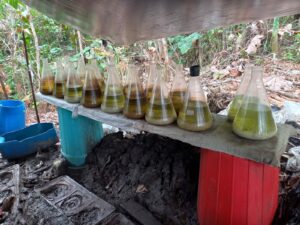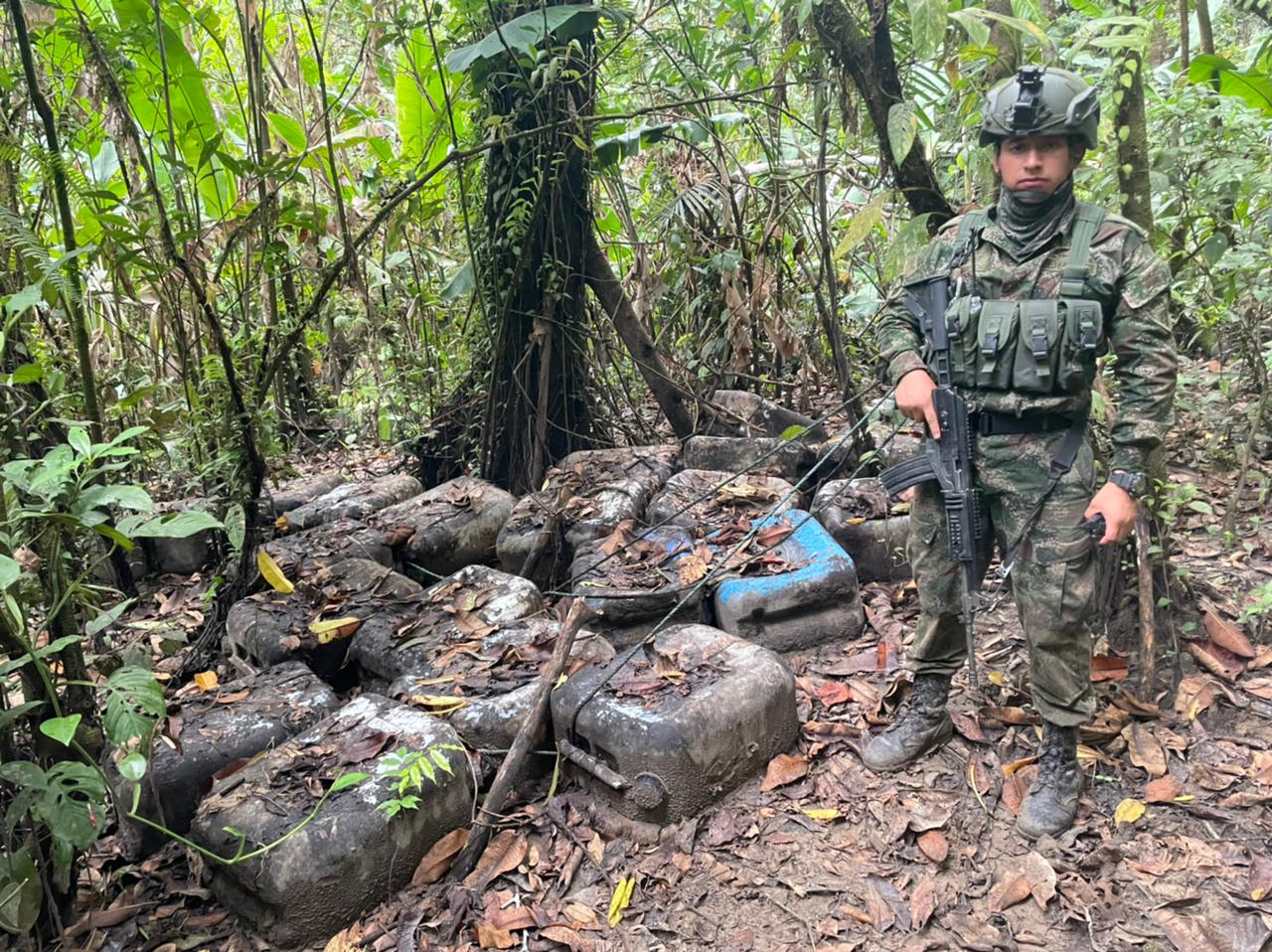The Colombian Public Force is not letting up its fight against narcotrafficking, achieving increasingly blunt results. As such, in late October, authorities destroyed 71 illegal laboratories that belonged to narcotrafficking organizations operating in the Colombian Amazon region, the Colombian Navy said in a statement.
The labs, located in the departments of Caquetá, Guaviare, Meta, and Putumayo, allegedly belonged to Structure 48, a dissident group of the Revolutionary Armed Forces of Colombia (FARC), and had the capacity to process up to 22 tons of drugs per month. In total, inside the labs, authorities found 2,410 kilograms of cocaine hydrochloride, more than 128,700 liters of liquid chemical precursors, 48 tons of solid chemical precursors, 27,677 kg of chopped coca leaves, and 55 kg of agrochemicals, the Navy said.

“Based on the consolidation of intelligence supplied by each of the respective intelligence agencies, we determined the military unit, taking into account the geographic location, that would carry out this operation,” Colombian Navy Captain Néstor Fernando Mariño Blanco, commander of the Southern Naval Force (FNS), which led the operation, told Diálogo.
In this operation, the Colombian Air Force provided air security to the troops by means of fixed-wing, rotary-wing, and remotely piloted aircraft, while the Navy transported Army personnel aboard river units to carry out the operation on land, locate and enter each of the laboratories, and seize and destroy the material found in a controlled manner. For its part, the Judicial Police verified and certified the quantities of drugs seized.
“At the end of the first quarter of 2018, armed actors were identified generically as FARC dissidents,” Capt. Mariño said. “By the second quarter of that year, community sources were already making reference to an organized crime group known as Los Sinaloa, now the Bolivarian Border Command, to which several former members of different FARC fronts [including Structure 48] and organized crime organizations such as La Constru, La Mafia, and Los Sinaloa belonged.”

These organizations affect the civilian population by establishing restrictions, controlling indigenous and peasant populations, giving them orders and threatening community leaders and those who promote illicit crop substitution programs, pressuring them to replant, and charging them fees for coca production, Capt. Mariño said. They also carry out armed raids on populated centers, forced disappearances, homicides, arbitrary detentions, forced recruitment, and use children and adolescents, among other crimes, he added.
“With this important seizure, the FNS prevented the monthly deforestation of approximately 22,000 hectares of jungle,” Capt. Mariño said. “So far this year and with the support of environmental entities, we have planted more than 15,690 fruit tree seedlings in order to preserve the natural resources of this important region.”
So far this year, and up to November 18, the FNS, throughout its riverine area of responsibility, has neutralized seven ringleaders and 97 men-at-arms that make up the structures of different criminal groups; it has seized 111 firearms, 2,069 kg of explosives, 73 communications equipment, and 238 illegal infrastructures of different types. Authorities also destroyed 338 narco laboratories, seized more than 400,700 liters of liquid chemical precursors, 161,137 kg of solid chemical precursors, 976 kg of coca base paste, 7,752 kg of coca base, 13,244 kg of marijuana, and 6,433 kg of cocaine hydrochloride, the FNS reported.









